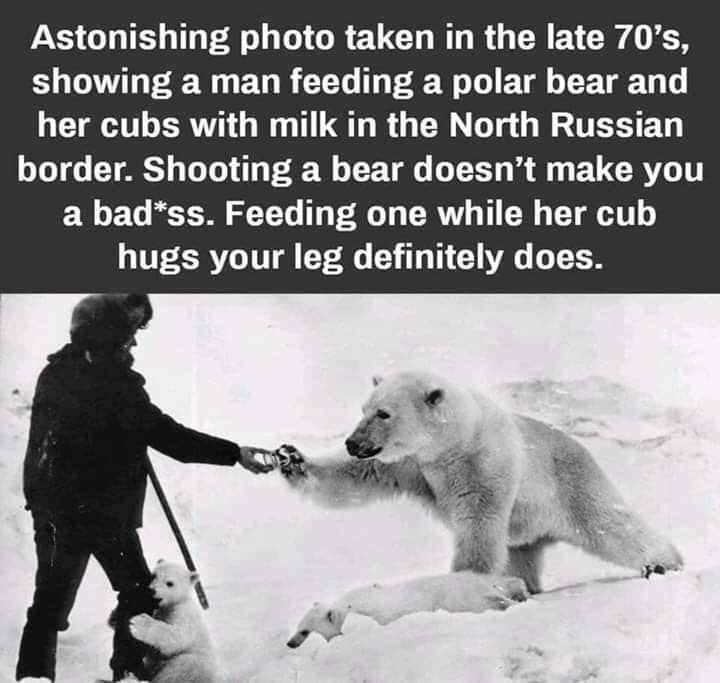What Compassion Looks Like

Or maybe it’s simply what’s depicted in the meme here. There’s something hard to describe about being moved to tears by the compassion shown in a single photo.

Or maybe it’s simply what’s depicted in the meme here. There’s something hard to describe about being moved to tears by the compassion shown in a single photo.
Craig,
It’s evident you have never experienced being up close and personal with Ursus maritimus! These huge hypercarnivorous creatures make very dangerous neighbours!
Polar bear populations are increasing. These animals require vast territories in which to live and roam. The current bear population has probably reached the highest level in human history with numbers being close to 35,000.
Although it’s popularly believed polar bears primarily eat seals, in fact, Ursus maritimus will eat virtually anything. These bears are great scavengers, muskox, reindeer, birds, eggs, rodents, crabs, blue mussels, green sea urchin, crustaceans and even other polar bears! Polar bears can eat plants. They may also eat berries, roots, and kelp. Marine mammals, beached whales, fish, caribou, white-beaked dolphins, even humans, are all just diner to a Polar bear.
Birds, such as dovekie, long-tailed ducks and common eiders, are easy prey for cunning bears. The bears catch unwary ducks and other birds by swimming underwater.
These amazing creatures are also able to swim vast distances (over 1000klm). Polar bears have been known to swim from Iceland to Greenland.
In recent times, with increasing numbers, Polar Bears have been moving into areas formerly occupied by large brown bears with whom they sometimes mate and produce hybrids. Cubs of both species are sometimes killed and eaten by both species. Polar bears may hunt on ices flows, but are born on land and are quite adapted to living on shorelines.
People feeding these creatures is not ‘kind’ or ‘compassionate’. Bears have a natural fear of of humans and this is a good thing for both humans and bears. Polar bears are very dangerous predators and with congregate around any available food source. polar bears have been known to attack and terrorize villagers, sometimes in large numbers. This behaviour is not driven by hunger, but when the bears have lost the fear of humans.
One of the reasons for the expansion of Polar Bear numbers is the rapid explosion in Harp Seal numbers. Harp seals numbers have increased from a mere 500,000 in 1970, to nearly 8 million today.
Most climate change researchers omit the increase of Harp seals numbers, preferring to concentrate on a potential decline in Ringed seal numbers. In fact, ringed seal which were confidently predicted as being extinct in the wild by 2020, are doing okay with about 1.5 million seals in existence.
Harp seal numbers are actually helped by warmer conditions and although the pups are very cute, furry and beloved by photographers and animal rights activists, to a Polar Bear these cute helpless pups are just lunch.
Polar bears diverged from the main bear genus about 400,000–600,000 years ago. During that time they have survived and prospered through a wide range of Climate phenomena, along with their prey.